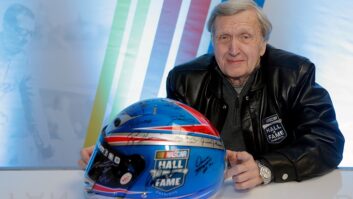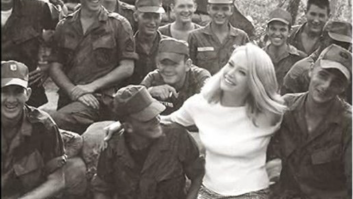CONCORD, N.C. — When Motor Racing Network selected a replacement for its automation system, we knew we wanted three things: stability, flexibility and good support. We found all of that and more with WideOrbit.
Motor Racing Network is based in Concord, N.C., and provides live lap-by-lap coverage of the top three NASCAR series — Camping World Truck Series, Nationwide Series and Sprint Cup Series — as well as NASCAR Live, NASCAR Performance Live and various NASCAR-related long- and short-form programs. We also provide lap-by-lap coverage of the Grand Am Road Racing Series. We provide programming to 650 affiliates and the Sirius/XM NASCAR channel, so performance and stability are vital.
Differences
Unlike a radio station, MRN’s operations take place in many locations: our main studio in Concord and on-location at many race tracks around the country. We have three production trucks: a 53-foot truck, a 40-footer and an 18-footer. These trucks contain mobile studios that we use as our broadcast facilities during NASCAR races, and the Concord studio is used to originate long-form programs.

Motor Racing Network audio engineer Todd Costello mans the board inside one of the mobile trucks with WideOrbit Automation for Radio on one screen.
Linking much of this far-flung operation together is the WideOrbit automation system that we use, WO Automation for Radio. It interfaces directly with our Axia audio routing system. We use WO Automation for Radioto play the beds and national spots for these programs, and it also controls GPI hardware to send commands to our affiliates to trigger their IDs, liners and stopsets.
MRN is most famous for our live broadcasts of NASCAR events; and one of the most exciting things we do is prepare for a race broadcast. One of our mobile studios will be sent to the track a few days before the race. While the truck is en route, our traffic manager in Concord uses WideOrbit’s traffic solution, WO Traffic, to prepare the commercial log for the race. We also copy the current commercials from the WO Automation for Radio system in Concord onto a USB hard drive.
Once the mobile studio arrives at the track, our producers record interviews and other special segments that will be heard in the race broadcast. We load these segments into WO Automation for Radio for playback during the race and program hotkeys with the interviews, beds and other items. This makes the content easily accessible for playback during the broadcast.
The day before the race, the producer arrives from Concord with the disk containing the spots and traffic log. We load the spots and log into WO Automation for Radio for use during the race. (We use sneaker net for this since there isn’t always reliable Internet service at the track.)
On the day of the race, everything is ready to go. When the broadcast begins, we use WO Automation for Radio to send GPO signals to our affiliates to fire liners, IDs and commercial breaks. The automation system also manages rain delays by sending signals to our affiliates. This makes it possible for our affiliates to automate MRN broadcasts fully. During the race, the board operator plays the spots and all of the prerecorded content from WO Automation for Radio. We even have hotkeys for on-air sequences for green flags, red flags and checkered flags.
The race broadcasts are high in energy and unpredictable, so sometimes we have to change the log on very short notice. This is where WO Automation for Radio’s Playlist Editor is handy.
Playlist Editor lets you make instant changes to the log from anywhere and those changes are seen immediately in the air studio. The audio engineer in the mobile studio has Playlist Editor open, and when we need to insert another segment into the log on the fly, it’s easy. The change appears instantly on the on-air screen.
After the race, the mobile studio begins its trip to the next track and the as-run files are sent to Concord for traffic reconciliation. We are using WideOrbit’s traffic system, WO Traffic, to schedule the spots for the race, and it has changed our traffic manager’s life. For example, reconciliation of the logs from the remote automation was a nightmare in our previous traffic system that took 2 to 3 hours a week. With WO Traffic, it now takes 10 minutes.
The board operators love the widgets feature in WO Automation for Radio. We have widescreen touch monitors in the mobile studios so the operators can arrange their screen however they want.
Every radio engineer looks for a system with knowledgeable and accessible support, and I found it at WideOrbit. As a previous SS32 customer, I knew that WideOrbit offered good support. Since we upgraded to WO Automation for Radio, the WideOrbit team has bent over backward. Everyone has been knowledgeable and helpful, and we never need to wait long for a response or answers.
With 650 affiliates and our commitment to Sirius, we have a lot riding on our broadcasts. WideOrbit has always worked hard for us and been committed to our success. Doug Watson is chief engineer for Motor Racing Network.
For information, contact Jim Hammond at WideOrbit in Texas at (214) 451-4070 or mobile at (469) 744-1350 or visit www.wideorbit.com.












